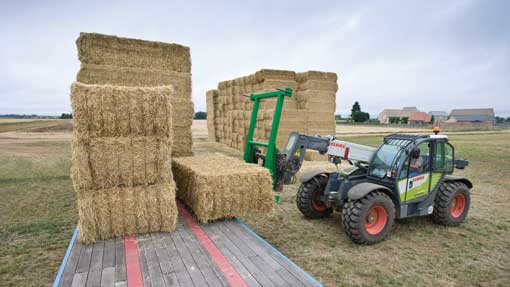Whether your company operates a policy of telehandler hire or maintains its own fleet, there are a number of rules and regulations that stipulate how to operate the machines on your site. Compliance with these regulations is essential to maintain a safe site, minimise the chance of an accident and stay within the law. They fall into three broad categories; site operation, the training and competence of the persons on site (including the telehandler operators) and the inspection and maintenance of any telehandlers operated on site.
This article is a guide to the operation of telehandlers and will offer step by step instructions as to how you can ensure your site is set up to promote safety, your staff are trained to a competent level and how regular maintenance can minimise the chance of an accident.
The Site
Firstly, a carefully designed site is an essential part of safe telehandler operation. The greatest danger to pedestrians is when a vehicle is traversing across your site and fatal injuries can occur on a telehandler striking a person. As a result, pedestrians must be kept separate from the machines at all times by clearly marked paths and roadways. A site speed limit should also be clearly defined and adhered to. Furthermore, clear visibility must be established to front and rear of any moving telehandler to minimise the chance of accidents occurring as a result of blind spots or unseen pedestrians.

The second greatest danger to pedestrians is from a telehandler tipping over during lifting. To minimise the risk of this occurring there are several steps to take. The ground conditions of the site should be examined, ensuring no lifting phases are completed on uneven or sloping ground. Overloading of the boom should be avoided by lifting within the vehicle capacities found in the user manual and, again, visibility should be maintained during all lifting exercises.
Staff and Pedestrian Training
The awareness and competence of all persons present on your site is another key part to minimising the chance of accidents.
Any staff driving or operating the vehicles must be trained to a competent standard and fully capable of operating the machines on site. There are a number of certificates that your staff can achieve my completing training courses run by recognised schemes. Before allowing a member of staff to control a telehandler you should check their certificates are valid and up to date.
It is also essential to make any other staff or visitors to your site aware that telehandlers are being operated and how to stay safe in their vicinity. This should include making them aware of the design of the site and which designated pedestrian pathways they should remain within.
Inspection and Maintenance
Finally, your telehandler fleet must be maintained to a certain standard to minimise the chance of breakdown or an accident onsite.
Inspections of the oil levels, tyres and the body of each telehandler should be carried out before each use by the operator and so relevant training is necessary for your staff. More thorough checks should be carried out weekly and monthly with a view to spotting potential damage and carrying out preventative maintenance on the vehicles.
Regular servicing of the telehandlers should also be carried out in line with the manufacturer’s recommendations. If your firm hires its telehandler fleet there is a possibility the lease company will maintain responsibility for the vehicle’s servicing and maintenance. It is important to establish this when drawing up the lease contract or risk facing unexpected costs later down the line.
As part of the inspection and maintenance regime it is important to keep a clear catalogue of records. These offer evidence of the maintenance and inspection you have carried out but can also be used to identify potential defects before they occur. These records should detail the types of inspections carried out, any damage found and any repairs carried out as a result.
To summarise, there are three broad parts to operating your telehandler fleets safely. By ensuring your vehicles are operated on a well thought out site, are controlled by well-trained individuals and are maintained to a high level you can minimise the chance of accidents on your site and stay well within the law.



